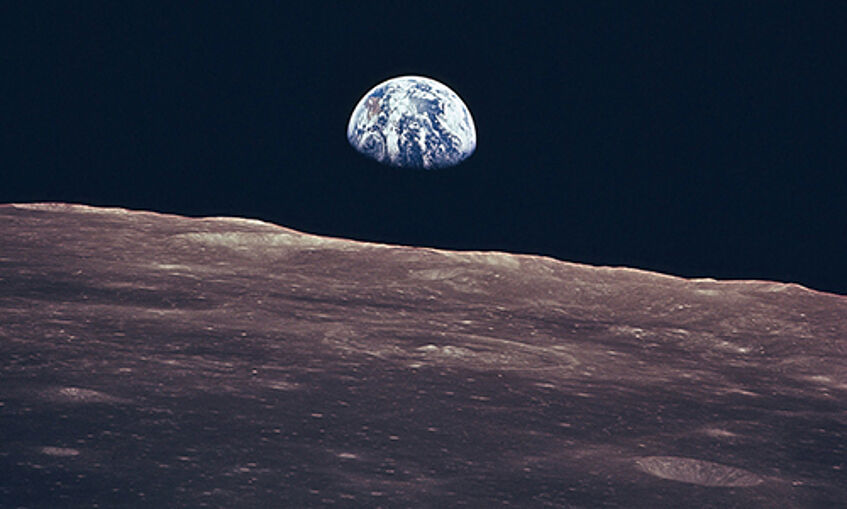The Planetary

Earth — The planet that sustains all (more-than-)human life
The Planetary
In the Anthropocene human beings are altering the Earth collectively. Of course, there are differences: some are making a much greater impact than others (ecological footprint). But as the “human web” (John & William McNeill) spans around the globe, the sum of anthropogenic changes has become a dominating geophysical force altering the planet. This planetary dimension of environmental change is new in the Anthropocene. Before we boosted our economies by burning coal, oil, and natural gas, environmental change caused by humans predominantly affected the biosphere — the sphere of life on the surface of the earth which consists of plants and animals. That is where humans accessed most of their resources. Today this is different.
Most of the materials we access, then circulate in our societies, and finally dump as waste in our environs, are taken out of the earth’s crust. What exactly is this planetary scale about? — Planets are astronomical bodies orbiting a star. Only planets can become the hosts of life as we know it. In recent years, astronomers have found quite a few candidates among other planets that might provide living conditions similar to those on Earth. But Earth is still the only planet that we know for sure has life crawling on its surface. There is no other “earth” we can escape to in case something goes wrong. Imagining all humans embarking a spaceship like Noah’s Ark heading for Mars, with a nice selection of animals brought along, is phantasy bordering on the absurd — even if Mars was a habitable place or could be turned into one. The only “spaceship” we have to survive on is Earth itself. A thin layer of gas, which we call the atmosphere, protects us from outer space which is hostile to any form of life. The boundary between the atmosphere and outer space has been defined at an altitude of 100 km. However, earthly life has expanded no more than a few kilometers up into the stratosphere, the lowest layer of the atmosphere, directly above the earth’s surface. The stratosphere provides sufficient amounts of oxygen for breathing and carbon dioxide for photosynthesis. Its ozone shield absorbs most of the sun’s ultraviolet radiation which causes skin cancer.
Changing the atmosphere as we have done by burning enormous amounts of fossil fuels is a dangerous experiment. Although unlikely, runaway warming due to unchecked accumulation of greenhouse gases is a possible and very dangerous scenario. Astronomers believe that this is what happened to Venus, our closest planetary neighbor, at some point in its history. Today, its atmosphere has more than 90% carbon dioxide and its temperature is estimated at being close to 500° Celsius. Protecting Earth from uncontrollable change caused by humanity is equivalent to protecting the planetary conditions for life. It is an open question how we translate this planetary dimension of the Anthropocene into policies that protect the earth and life on it. How do we transform our economies to sustain conditions for complex forms of life as they have evolved in Earth history? Whatever our answers are to these questions, it seems clear enough that “the Planetary” is no longer just an astronomical or scientific category. It has become a political and socio-economic category as well (Planetary Boundaries, Planetary Politics).
— Franz Mauelshagen
Researchers: Thilo Hofmann, Christian Köberl, Peter Schweitzer
Further Reading
- Boulding, K. E. (1966) The Economics of the Coming Spaceship Earth. In: K. E. Boulding and H. Jarrett, eds. Environmental Quality in a Growing Economy. Baltimore: Johns Hopkins University Press, 3–14.
- Ingold, T. (2000) Globes and Spheres: The Topology of Environmentalism. In: T. Ingold. The Perception of the Environment: Essays on Livelihood, Dwelling and Skill. London/New York: Routledge, 209–218.
- McNeill, J. R. and McNeill, W. (2003). The Human Web: A Bird's-Eye View of World History. New York/London: W. W. Norton & Company.
- Rockström, J. et al. (2009) Planetary Boundaries: Exploring the Safe Operating Space for Humanity. Ecology and Society 14(2): 32.
- Steffen, W. et al. (2015) Planetary boundaries: Guiding human development on a changing planet. Science 347(6223).
- Tsing, A. L., Swanson, H. A., Gan, E. and Bubandt, N. eds. (2017) Arts of Living on a Damaged Planet. Ghosts and Monsters of the Anthropocene. Minneapolis: Minnesota University Press.
